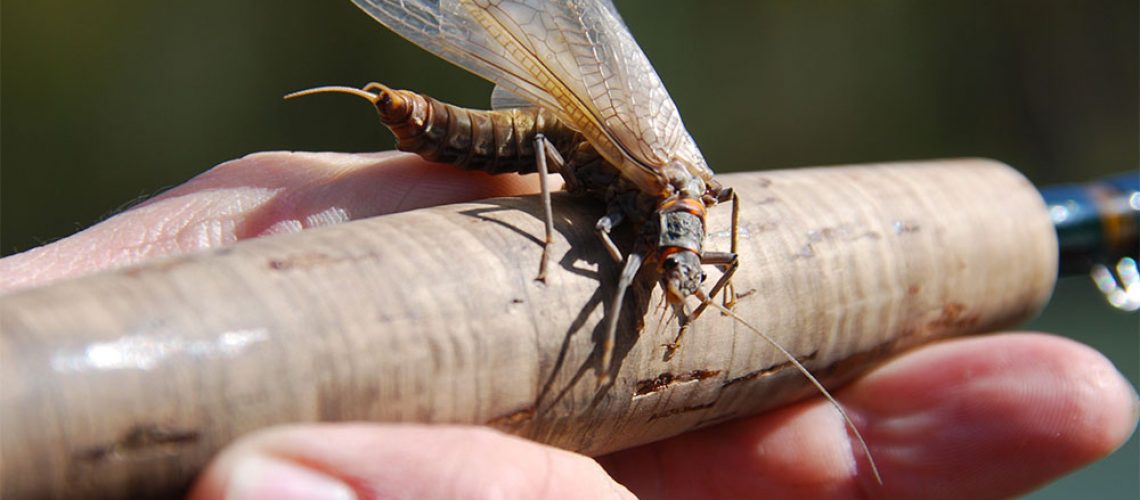Western Fishermen love the Salmonfly, and for good reason. The nymphs, or immature flies, are actually quite large. In fact, they can sometimes be the largest organism in the water, besides fish of course. This makes them perfect bait for trout anglers, and every spring when there’s a hatch, fishermen and fish celebrate at the same time.
Salmonflies are Selective with Their Habitat
You will not be able to see salmonflies on every river in the West. As a matter of fact, the Deschutes River System is the only river in Oregon that the salmonfly calls home. Why? They are very tempermental about the water temperature. Salmonflies prefer a medium-temperature river; not too hot, not too cold. The Deschutes has a very constant water temperature and falls within their comfort zone. This is critical as the salmonfly lives in the river for several years.
About the Salmonfly
The scientific name of the salmonfly is Pteronarcys Californica and nymphs can grow to as big as 50 mm before molting and becoming an adult fly. They live in the river where the current is moderate to fast and where they can latch on to boulders. However, as they grow, they can lose their grip in the current to become a tasty snack for the waiting trout or to be scooped up by fishermen for bait.
The nymphs live in the water for three long years. Once they mature, they crawl to shore. This is called their migration and is often when they get knocked loose by the current. Most of the flies migrate during dawn or dusk, trying to find tree trunks, reeds, or exposed rocks, anything that pops up out of the river and gives them a bit of high ground. At 2 and a half inches long, the flies break out their two pairs of wings and take their orange and black bodies into flight.
Using the Salmonfly as Fish Bait
Once they have the ability to travel around out of the water, they search for a mate. Females develop egg sacs that attach to the rear of their abdomen. They then fly over the river, land on the surface, and deposit their eggs. This makes them easy pickings for trout. This is one of the only times of year that you can depend on seeing larger, 15-18″ trout, rise to the surface from the river depths. They know there are large, easy to nab insects on the surface and these large trout are not going to miss an easy meal.
Many anglers will use one of two tactics for catching trout. “Nymph fishing” is where you imitate a nymph and fish under the water surface, near rocks and boulders where trout are feeding. “Dry fly fishing” is imitating the current insect hatch with an imitation fly at the water’s surface. During the salmonfly hatch, dry fly fishing is a bit easier than at other times of the year. You can use an actual salmonfly for bait instead of an imitation fly and those large trout are at the surface looking for an easy meal. In the trout fishing world, “It’s the most bang for your buck!”
Salmonflies may not be beautiful or graceful during their lifecycle, but they keep our Deschutes River fish population strong. Maupin area fishermen call them a favorite bait, especially come April and May when the insects hatch and trout fishing season is in full swing.
